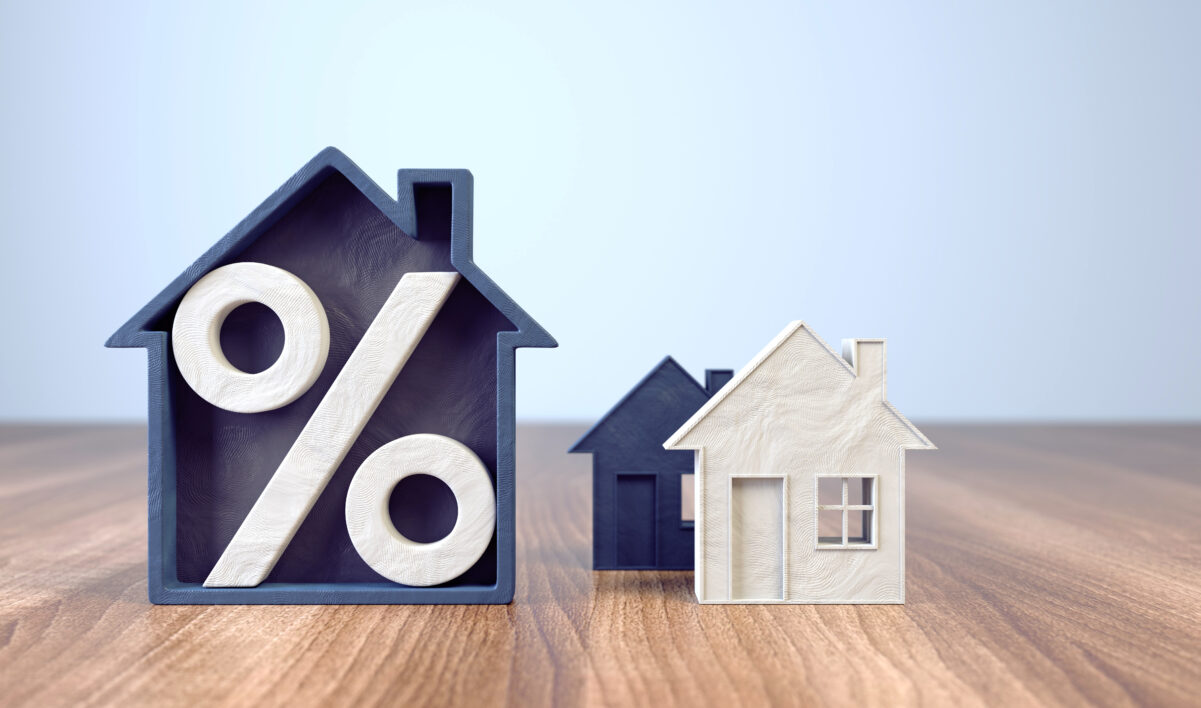Nevada mortgage rates are rising with national interest rates, and many home buyers feel squeezed out of the market. After all, each fraction of a percentage increase has a direct impact on a buyer’s monthly payment and how much loan they can afford. As rising rates reduce the amount of money buyers can afford to borrow, they can also reduce the demand for homes and impact sellers.
Nearly one in five sellers dropped their listing price in May 2022, which could present a silver lining for buyers. Rising interest rates may be doing what they are meant to—stabilize supply with demand, resulting in a balanced and fair market for everyone involved.
But, that doesn’t change the concern both home buyers and sellers feel. We can’t change the Federal Reserve’s plan to raise interest rates again in hopes of bringing down inflation. However, we can offer highly specialized, local insight about Nevada mortgage rates from our partners at Synergy Home Mortgage.
Below, Stephanie Hanna, a Senior Mortgage Consultant for Synergy, shares how sellers can make their homes more appealing and affordable by offering closing cost credits to buyers. She also discusses how mortgage rates play into the bigger picture of what’s happening in the economy.
Worried About Rising Nevada Mortgage Rates? Here’s What You Need To Know.
What’s going on with Nevada mortgage rates?
Stephanie: In the last quarter of 2020, the United States experienced record-low mortgage rates, which helped fuel the uptick in home sale prices. As buyers could afford more loan for the same monthly payment rate due to low-interest rates, the demand in the market increased. Because supply was lower than demand, sellers were able to ask for more for their homes, and buyers could afford it due to lower interest rates.
However, this also resulted in nearly 20% increases in median home prices during the same time.
The Federal Reserve responds to inflation by adopting a more aggressive monetary policy, which invariably results in higher mortgage rates. That’s why Nevada mortgage rates jumped 1.5 percentage points during the first quarter of 2022, representing the most significant quarterly jump in more than 25 years.
How have rising interest rates impacted buyer purchasing power?
Stephanie: For every 1% increase in interest rate, the loan that a buyer can afford drops by 10%. Buyers who could afford the monthly payments for a $600,000 loan in November 2021 can now afford the monthly payments for a less than $480,000 loan in June 2022. The monthly payment for both loans is the same, but the interest the buyer must pay off eats into the amount they can borrow. Higher interest rates have made it challenging for buyers, especially first-time home buyers, to afford homes in specific price ranges.
With Nevada mortgage rates rising, what can sellers do to attract buyers without reducing the price of their homes?
Stephanie: Many sellers with Reno and Sparks homes for sale don’t realize that a price reduction can often cause buyers to question their home’s value and lead them to take the wait-and-see approach. So, to avoid reducing the asking price or accepting a low offer, sellers can give buyers a closing cost credit. Buyers can use these credits towards their closing costs, including paying discount fees to lower their rate but can’t use them for a down payment.
How can discount points help ease the impact of higher interest rates?
Stephanie: While closing credits can help buyers when buying a home by reducing their out-of-pocket expenses, they can also be used to pay discount points which will reduce their interest rate and, therefore, their payments throughout the entire loan.
Discount points are essentially prepaid interest. The purchase of each point can lower mortgage rates by up to .325% for home buyers. For example, if a buyer’s budget for a mortgage payment is about $3,000 per month, they can afford a $500,000 loan with an interest rate of 5.875%. But if they could get a lower interest rate, at 5.125%, they could borrow almost $50,000 more without changing their monthly payment.
Here are a few examples of what discount points can look like on the buyer’s side:
| No discount points | One discount point | Two discount points | |
| Purchase price | $630,000 | $630,000 | $630,000 |
| Down payment | 20% | 20% | 20% |
| Total loan amount | $504,000 | $504,000 | $504,000 |
| Mortgage interest rate | 5.875% | 5.5% | 5.125%; |
| Cost of discount points | N/A | $5,040 | $10,800 |
| Monthly mortgage principal and interest | $2,981 | $2,861 | $2,744 |
| Difference in monthly payment v. no discount points | N/A | $120 monthly savings | $237 monthly savings |
A discount point is equal to 1% of the total loan amount.
For sellers, offering credits to use toward discount points as part of the sale can also be beneficial. In this scenario, the seller can meet the buyer’s budget, doesn’t have to decrease the listing price, and doesn’t risk their home sitting on the market as buyers wait for the next price decrease.
How can closing credits help buyers afford more?
Stephanie: Sellers can offer closing cost credits to a buyer to either use toward the out-of-pocket fees at closing (thus leaving them more money after closing to potentially do repairs or upgrades on the home) or apply towards paying discount points to reduce their rate. Buyers can also request closing credits for the same use when they submit an offer.
Closing cost credits can also be beneficial to sellers. For example, if a seller lists a home for $400,000 and a buyer offers $395,000 with a $5,000 closing cost credit, the seller will receive $390,000. Monetarily, there is no difference to the seller between the buyer requesting a closing cost credit like this and a buyer offering $390,000. But, if that difference results in the home sitting on the market, that could impact the seller significantly.
Should I make a low offer on a home in this market if I’m a buyer? If I’m a seller, should I accept it?
Stephanie: While it all depends on an individual’s situation, many financing options can bring buyers and sellers to a price point they can both afford. It’s important to consider options like buying discount points and closing credits in addition to the initial offer on the home. Often, there’s a creative solution that benefits both buyers and sellers.
How can a recession influence the housing market?
While the word “recession” is getting a lot of attention in the media and has many people worried, it’s crucial to define this term carefully. Experts define a recession as a significant decline in economic activity that lasts more than a few months and impacts employment, manufacturing, retail sales, gross domestic product, and consumer income. So, will we have a recession in the next few months? No one can predict the future, and it’s crucial to monitor the economic factors above or work closely with someone who does.
It’s also important to remember that the Great Recession of 2008 was caused in part by the proliferation of high-risk mortgages and lending practices that longer exist. The collapse of subprime lending fueled a downward spiral in home prices and the rest of the economy.
Our housing and financial markets look different now than they did in 2007, which is a good thing. While higher Nevada mortgage rates will inevitably stabilize home sales and slow home price appreciation, it’s unlikely that they will, in and of themselves, cause a recession.
In other modern recessions, housing prices hardly skipped a beat. Our records also show a similar trend with mortgage rates, historically rising with inflation and gradually declining after an economic downturn.
Advice To Buyers and Sellers In The Face Of Rising Nevada Mortgage Rates
- Buyers: Trying to time the market is a risky game. If you’re ready to buy now, it’s time to lock in current home prices and mortgage rates without gambling if either will decrease. Some experts believe home prices will increase by 10.8% by the end of 2022. Financing is more than just getting an approved mortgage—it’s the fulfillment of finding your dream home in the current housing market. As a buyer, you have several options for achieving homeownership, including leveraging closing cost credits and discount points. Don’t be discouraged by today’s higher interest rates. There are a variety of home loans that can help and creative approaches too.
- Sellers: Before reducing the price of your home, consider offering closing cost credits or discount points to buyers, which will allow them to afford more and get you closer to the asking price you want.
Stephanie Hanna is a Senior Mortgage Consultant with Synergy Home Mortgage. For informational purposes only: Dickson Realty is not a mortgage lender. Synergy Home Mortgage is not licensed to sell real estate. Contact Synergy Home Mortgage directly for questions regarding mortgage products and your eligibility. Your actual rate, payment, and costs could be higher. Payments are estimates. Get an official Loan Estimate before choosing a loan. This communication does not constitute a commitment to lend or the guarantee of a specified interest rate. Rates are for illustrative purposes only.
Stephanie Hanna – MLS 188917 – 1030 Caughlin Crossing, Reno, NV 89519 – 7757-62-9114 stephanie.hanna@synergyhm.com
Whether you’re a buyer or a seller, you need an experienced lender and real estate agent to help you navigate this market. At Dickson Realty, we are committed to helping navigate Nevada mortgage rates and the Reno/Sparks real estate market. To get expert help, contact one of our neighborhood experts today.



